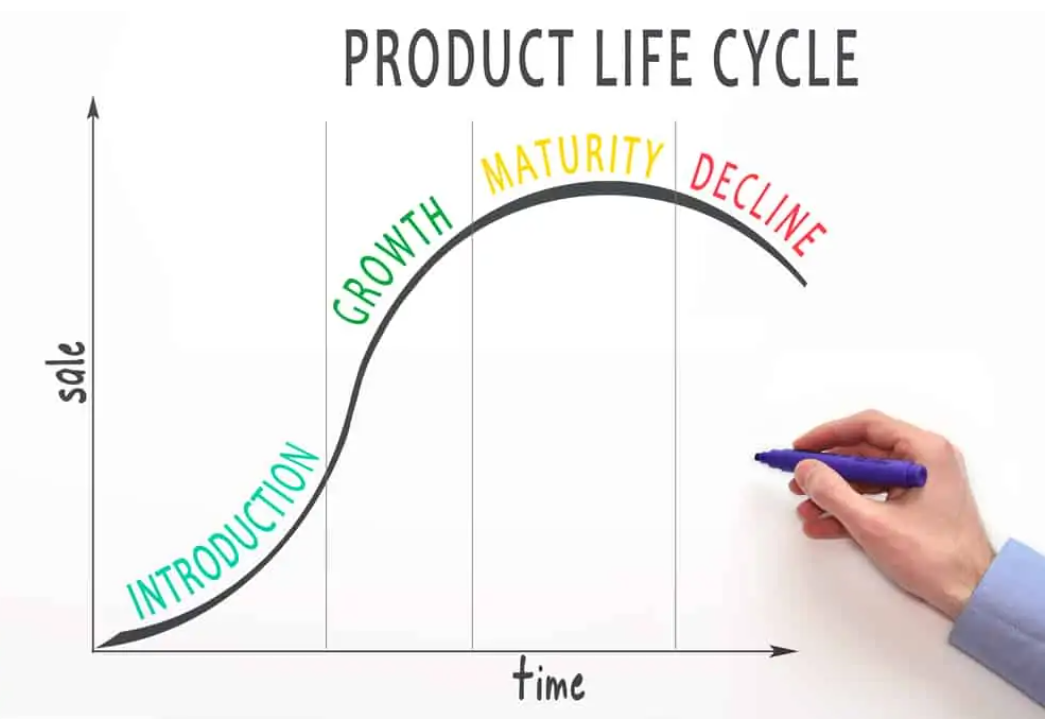Written by


Don’t have a Reach account? Sign up here
Don’t have a Performance account? Sign up here


Без категории — 15 Сен 2022
What are the Four Growth Strategies?
Pretty much all business owners want to see their company grow. From small businesses and startups to giant multinational corporations, increasing revenue and gaining new customers are two of the fundamental business goals that most companies share.
A growth strategy is a plan of action businesses use to navigate and achieve their expansion goals. Throughout this post, we’ll be looking at four different strategies for growth inspired by something known as the Ansoff Matrix.
Of course, here at Affise, we’re in the business of performance-based partner marketing. As such, we’ll double down on how tools such as Affise Reach can be used to implement strategies for business growth.
When it comes to the different types of growth strategies, there’s one name that gets bandied about a lot: H. Igor Ansoff.
Known by many as the father of strategic management, Ansoff was an applied mathematician and business manager who published numerous influential studies. His contributions to the field of business planning and management are recognized as having helped to shape the corporate strategies of some of the most successful entrepreneurs and biggest companies in the world.
One of the most well-known tools that Ansoff developed to enable business leaders and managers to strategize better is the Ansoff Matrix. Also known as the product and market expansion grid, the Ansoff Matrix allows managers to identify, develop, and articulate their strategies for growth.
In a 1957 paper, Ansoff defined a product-market strategy as «a joint statement of a product line and the corresponding set of missions which the products are designed to fulfill». In the paper, he describes four means of growing an organization that corresponds to the four quadrants of a product-market matrix.
The four strategies Ansoff identifies are market penetration, product development, market development, and diversification. As you move along each axis, from known/existing to unknown/new, the risk of the strategy increases.
In the rest of this post, we’ll be looking at how these strategies can be applied to achieve your business’ growth goals. Because it’s precisely what we do, we’ll be paying extra consideration to how the different strategies work within the context of partner marketing.

Market penetration refers to an expansion strategy that looks to grow the distribution of existing products within existing markets. That’s to say, this growth strategy focuses on selling more current products to your existing customer base, growing the overall size of the market, or increasing your market share within existing market segments by attracting customers from direct competitors.
As you can see from the matrix, market penetration is the lowest risk of the four business growth strategies Ansoff identified. This is because it avoids much of the uncertainty associated with developing new products or attempting to break into new markets. That doesn’t mean that the success of a market penetration strategy can be taken for granted, though.
Business managers and strategists often refer to three common methods of market penetration:
The second of these methods, increasing promotion and distribution efforts, can be done entirely internally or it can involve external parties. Internal changes could be anything from investing in quality customer service with specialist agents and a toll free number to reorganizing the structure of your sales and marketing teams to improve the customer experience.
When it comes to growth partnerships, option two is the most utilized means of increasing sales using a market penetration strategy. It involves introducing offers and discounts on your products to stimulate growth by increasing sales. A partner marketing program in which you partner up with a brand that isn’t a competitor but still caters to the same market is a simple but effective way to achieve this.

For example, you could partner with media outlets whose audience would naturally be interested in your product. With this approach, a website selling ski gear might offer discounts to subscribers of a winter sports magazine, or a manufacturer of camera lenses could team up with a YouTube channel that reviews photography equipment.
Affise Reach is a great way to connect with partners that are relevant to your target market. It makes it easy to identify and build the partnerships that will help you increase your brand visibility within its current market, and can provide just the nudge needed to convince undecided buyers to choose your product over a competitor’s.
Building partnerships as part of a market penetration strategy is a great way to increase the reach of your brand without needing to expand into unfamiliar markets. Gaining referrals from relevant partners can be key to driving growth within the market by increasing your overall market share and even opening up new segments of that demographic to you.
The next quadrant of the Ansoff Matrix identifies a growth plan that is centered on introducing new products to existing markets.
A product development strategy involves developing new and improved products for an existing customer base made up of current customers and potential customers who already own or are in the market for something similar.
Product development strategies can be divided into four main types:

Different industries have different standards when it comes to the product development lifecycle.
Some products are typically updated on an annual or seasonal basis, while some are sold as one-off items and the manufacturer then moves on to the next product. In other industries, continuous product development is the norm. Knowing which model best suits your business is a matter of understanding your innovation and development capacities, as well as the needs of your different customer segments.
Businesses that want to pursue a product development strategy need to have a strong understanding of market conditions and customer needs. As such, carrying out effective market research is an essential component of this approach.
There are several ways to gain an understanding of the kinds of new and improved products that would appeal to markets that you already operate within.
One way is to directly survey your existing customers and ask them about what features they would like you to add to existing offerings, or what new products they would be interested in purchasing from your business.
Another way is to tap into your pre-existing data sources using business intelligence software such as the Affise BI suite of data tools.
Most businesses, but especially those that are ecommerce-based, collect valuable customer data that can be used for product development. If your data streams are well aligned, business intelligence and predictive market analytics can help you forecast which variations and changes to your product lines would be the most successful.
While a product development strategy is based on introducing new products to existing markets, a market development strategy centers around introducing existing products to new markets.
There are several ways to go about developing new markets. You could introduce your product in a new geographic location. Or you could adjust your growth marketing and sales strategy in a location in which you already operate so as to appeal to a different demographic.

A market development strategy is most likely to succeed if one or more of the following four statements applies:
Changing your sales strategy so that you employ new distribution channels will increase the number of potential customers who encounter your product while shopping. This could mean creating partnerships with new physical or online retailers or introducing your product on a new platform.
There are also plenty of ways to incorporate different strategies and technologies for ecommerce Marketing into a market development approach to business growth. For example, you could modify your digital marketing tactics so that you increase your social media visibility on different channels.
Many digital marketers don’t even realize when their social media marketing is stuck in a rut. Diversifying your approach to include new and different platforms is a simple yet effective way to increase your brand’s online reach.
The best social media strategies combine paid advertising and a focus on more organic growth and earned media value. As well as diversifying the platforms you engage with, broadening your social media horizons can also include exploring new uses for social media sites where you already have a presence.
Before carrying out market development initiatives, you should have a good understanding of the current playing field. This includes getting to know any existing competition in the new market and getting a feel for what share of the market is up for grabs.

Compared to a market penetration strategy, a market development typically requires a greater level of investment. Accordingly, this strategy comes with a higher risk factor. After all, if investment in a new market opportunity doesn’t pay off, companies can suffer significant losses.
Just as product development can be more or less risky depending on how similar the planned new product is to your current offerings, you can mitigate some of the risks of a market development strategy by staying close to markets within which you already operate. In other words, a strategy that intends to breach entirely new markets with no precedent for similar product campaigns will carry more risk than one that attempts to break a new market that shares something in common with a more familiar, known market.
Of course, the higher risk approach does come with its potential rewards. Entering totally unfamiliar markets paths the way for more innovative and imaginative eCommerce marketing partnerships as existing players in the field are less likely to perceive your brand as a competitor.
The final quadrant of the Ansoff matrix refers to diversification. A diversification strategy requires you to both develop a new product and to enter a new market.
A diversification strategy has been the driving force behind some of the growth greatest success stories in business.
Consider, for example, that Samsung first started life as a small trading company dealing in groceries. These days, the Samsung group of companies is one of the largest in the world. Its product lines range from life insurance to consumer electronics, and it has an industrial portfolio that spans everything from shipbuilding to the manufacture of cloud PBX solution equipment.

Business managers and strategists talk about two kinds of diversification: related diversification and unrelated diversification.
Related diversification is when a company stays within a familiar market or extends an existing product line with new variations in order to appeal to different customers. The key to related diversification is that ultimately the business does not stray too far from its field of expertise and retains common similarities among its product line.
Many companies look to diversify their product offering and tap into new markets once they’ve built a good reputation for their initial product or range of products.
A good example of related diversification is the kitchen appliance manufacturer Kenwood.
A company that started out making toasters, over the years Kenwood have diversified their product range to include kettles, mixers, blenders, and other, mostly electronic, cooking utensils. The various items they make all have different uses and components, and might require completely different manufacturing capacities. But because they all adhere to a recognizable theme, Kenwood has managed to cultivate a solid reputation.
Unrelated diversification, on the other hand, involves extending into a market or industry that you have little prior experience with.
Often unrelated diversification strategies are pursued as the result of companies spotting an opportunity through an existing campaign. For example, Ferrari releases a fashion line twice yearly. But before they entered the world of fashion, they were already producing clothing as merchandise, so were not completely inexperienced in the sphere of clothes design.
Ask yourself what kind of growth opportunities could be extracted from your existing business processes? With this question in mind, a business process management system can help you to optimise these processes for growth and identify potential areas for diversification.
There’s no easy distinction between related and unrelated diversification. Rather, think of diversification strategies as sitting on a scale. At one end of the scale is the development of products and markets that are broadly similar to preexisting ones. At the other end is the development of products and markets that are completely different from those you are already familiar with.

A diversification strategy lends itself to collaborative partnerships both between business units within the same company and between different companies.
When developing new products and entering new markets it can help to have partners who are able to distribute offers to their own customer base. This will encourage first-time customers to try your brand and can help drive sales, especially at the start.
If you choose to engage in multiple partnerships as part of a diversification initiative, it helps to use a tool like CPAPI that helps you to transfer offer data from multiple campaigns into a single system.
The Ansoff matrix is a useful tool for organizations that need to identify and explore their growth options. One of its major strengths is that it helps to visualize the different risks associated with possible strategic directions.
To make the most informed decision regarding which strategy is best for your business, you should first carry out a thorough risk analysis. This involves analyzing potential financial losses and forecasting what effect a failed strategy will have on all relevant performance metrics.
A comprehensive competitor analysis should also be carried out when assessing the risks of entering a new market. This will provide the important strategic context you need to identify areas of opportunity and possible threats posed by other businesses.
Of course, with any business strategy, anticipating difficulties and employing the best tools for the job can help to alleviate some of the risks. For example, when updating software to meet the growth demands of a new market, ensure you follow a coordinated platform migration plan that won’t inhibit the smooth functioning of your vital business systems.
It also pays to remain open-minded and not allow your business approach to become strategically pigeonholed by always trying to conform only to one quadrant of the Ansoff matrix. Some strategies might not easily fit within one of the four types discussed here. And that’s fine. The product-market grid is a way of visualizing and articulating different approaches and their associated risks. It isn’t a prescriptive device intended to close off potential routes to growth.
Keep in mind that the Ansoff matrix doesn’t account for the challenges that growth strategies can create for your current operational model. By diverting resources into any of the strategies discussed, you also risk that the performance of your existing business processes will suffer.
Ultimately, the key to scaling any business successfully is doing so in a sustainable way. This is the very reason why managers make business plans — so that they can anticipate and take advantage of growth opportunities but also prepare your business for the planned growth.
Written by
Accelerate Agency
Stay on top of the competition. Let us keep you updated with news, insights, and more

